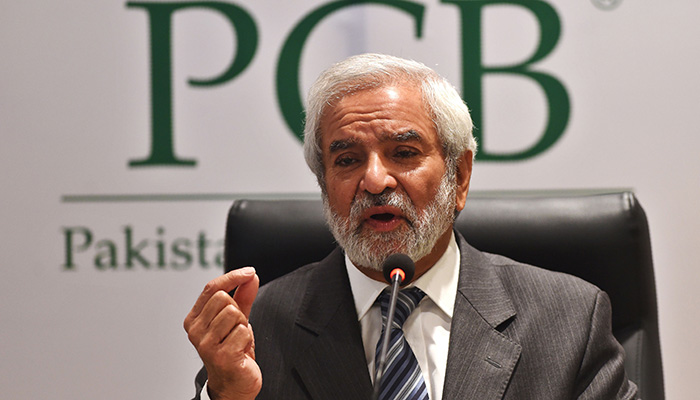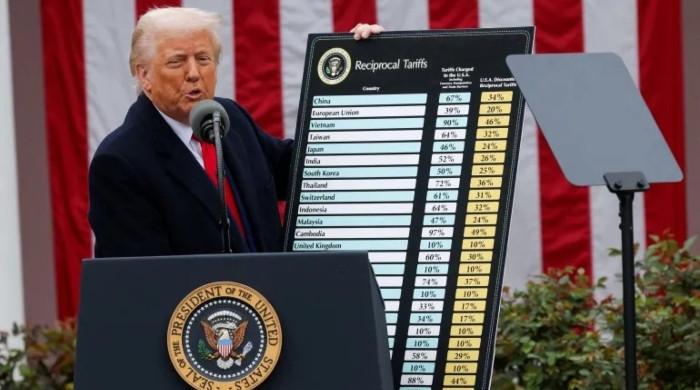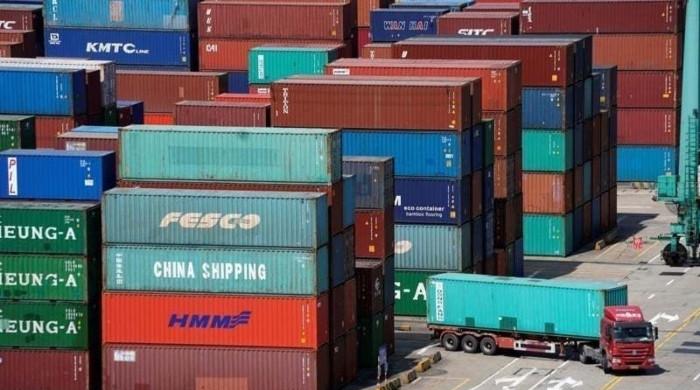Troubling times ahead for Ehsan Mani
The bi-lateral series with India, PSL’s fourth edition and PCB’s internal politics. Troubling times ahead for Ehsan Mani
October 19, 2018

One of the popular myths about World War II is that when a German military official saw an aerial view of London, he blurted out, “What a perfect city for robbing.” It is the misfortune of the Pakistan Cricket Board (PCB) that many people look at it with the same lust in their eyes.
As long as the PCB was the Board of Control Cricket Pakistan (BCCP), those that worked for it and in it, were deeply linked to the sport. From Justice Cornelius, who was the original patron of cricket, to Arif Abbasi, they all followed the values and traditions of the gentleman’s game.
The beginning of the deterioration came about without much ado.
Former head of the board in the late 90s, Mujeeb ur Rehman decided that the star, which had been the logo of the cricket board for the longest time, was to be replaced by Nike’s logo instead.
He is alleged to be the same gentleman who thought nothing of flying the entire cricket team to The Lord’s, just so that he could have a photo session with greats such as Wasim Akram and Saeed Anwar at the ‘Home of Cricket’. That day could be considered as the start of the era of misusing PCB’s powers, and it continues even now.
It can be argued that in the past, there were instances when the heads of the organisation ran the board with just a handful, but efficient, competent people.
However, at present, by many accounts, the number of employees has crossed north of 900.
Upon his appointment recently, the new chief Ehsan Mani announced that he will bring about a culture of ‘merit’. However, it has been almost five weeks since he has taken over the reign from Najam Sethi but there’s hardly any change on the horizon.
There is no doubt that by successfully inaugurating the Pakistan Super League, Najam Sethi won the hearts of this cricket-mad nation. But there is a case to be made that under his tenure, domestic cricket suffered terribly.
The board spends millions upon millions of rupees organising domestic cricket but the system keeps getting changed every other year and players have repeatedly complained about the structure, the inconsistency and facilities provided to them.
Allegations of nepotism were rife during the Najam Sethi era too. Of the three officers that Najam Sethi had brought in as part of his team, two, have resigned after the former Chief’s departure. The post of the third officer has been made redundant under the new administration. Another stalwart was transferred from the Department of International Cricket to the PSL Secretariat.
But Mani, now firmly in the saddle, has his own set of problems to deal with.
Right now, the PCB is looking for a Chief Executive. According to my sources, while the Asia Cup was going on, Ehsan Mani invited Ramiz Raja over for talks but so far, nothing has come of it.
Other names being considered include Zaid Noorani, who had worked on the Sharjah Benefit Series, Salman Sarwar Butt and former member of the Governing Board Mansoor Masood Khan, who is former cricketer Shan Masood’s father and a banker by profession.
Zaid Noorani is the son of Qasim Noorani, who helped lay the foundation of cricket in Sharjah and is considered a good administrator as well as somebody who understands broadcast media. Currently, one of PCB’s primary problems is attaining competitive rates for broadcasting and marketing rights. Noorani seems to be the man for the job.
Salman Sarwar Butt was one of the founders of the PSL. Sources say that Butt has already met Ehsan Mani and that he may be given a post in the marketing department or the PSL Secretariat.
Lastly, an interesting choice that is being mulled over for the post of Chief Executive, is that of Sami Burni. Previously, Burni was the general manager media at the PCB. He works with the International Cricket Council now. In the international cricketing circles, he is considered a competent officer.
Then there is the bilateral series with India and the return of international test cricket to Pakistan. Fifteen years ago, when Mani was the president of the ICC, he was thought of as being anti the Board of Control for Cricket in India (BCCI). During his tenure, he did not let India get away with dictating terms to the ICC.
Mani has taken over the reigns of the PCB at a time when political relations between India and Pakistan have hit rock bottom. On top of that, the two boards have locked horns in a bitter legal dispute.
No one knows better than the chairman of the PCB that if the ICC decides in Pakistan’s favour, then it will be very difficult to get a stubborn India to comply with the ICC’s orders. Perhaps, this is why Mani has already started rekindling ties with his contacts in the Australian and British cricket establishment. Mani spent his entire youth in England, where he is said to know practically everyone of importance.
As for Australia, Malcolm Grey and Malcolm Speed, former senior administrators with Cricket Australia and the ICC, still wield considerable influence over the Australian Cricket Board. They are Mani’s close friends.
Along with Grey and Speed, Mani had kept BCCI in control. Mani might be eagerly waiting for the current ICC chief executive, Dave Richardson, to walk away from his post, which he is scheduled to do next year after the World Cup.
Mani and Richardson have never seen eye-to-eye; in fact, it is believed that there may be animosity between the two. Richardson’s detractors say he is weak and indecisive. The South African could not block BCCI’s bullying at the ICC. His first priority was to secure his job and for that, he needed BCCI’s help. But Mani’s troubles will not end with Richardson’s departure. The ICC President, Shashank Manohar, will also be an obstacle. Despite being the ICC President, he pleaded the case for India at the hearing in Dubai.
The first order of the day for Mani is clear. With Australian and British boards in tow, he must stop the BCCI's dominance at the ICC. It seems that there are no other options for a bilateral series with India and for the return of international cricket.
And finally, things aren’t all hunky dory at the PSL either. Unfortunately, despite three successful seasons of the domestic tournament, merchandising has not picked up the way it should have. This leaves the brunt of the losses to be borne by the owners of the teams. There is no large retail brand in the country, and even if there was one, imposters copy the designs pretty quickly and flood the market with cheap imitations. During the PSL matches, thousands of supporters were seen in team shirts and hoodies, yet this money was going to illegal copycats. From a PSL mug to a pen, all kind of unlicensed merchandise is available in the market. To plug this loss, Mani must take the team owners into confidence, and contact law enforcement agencies for an urgent crackdown.
And though the PSL may not be at the same level as India’s IPL, it can definitely compete with the Big Bash. Mani should be thankful to Najam Sethi for his hard work.
To promote the PSL further and to make it more profitable, the PCB will have to do something about its international broadcasting rights. Currently, in England, the matches can be seen on a second tier news network. The goal for the PCB should be to broadcast the matches on Sky Sports or BT Sports. In Australia, not even one match of the PSL has been broadcasted. In India, the matches are aired by Discovery Sport. Mani and his team should realise that unless the matches are broadcast on StarSports or Sony Sports, on the other side of the border, the PSL will not earn more broadcasting rights.
Those who are close to Mani say that he is being very careful considering the fourth edition of the PSL that is right around the corner. He is aware that at the slightest hiccup in the PSL, he will be taken to task by the opponents of the ‘Tabdeeli’ slogan.
Note: The views expressed are those of the author, and do not necessarily reflect the official policy or position of Geo News or the Jang Group.











